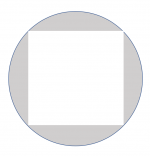WJC
Well-known member
Hopefully, I am going to be busier than usual for the next few days. So, I wanted to offer a few thoughts. I know that although it has a reason, some people don’t appreciate my cut to the chase style of writing. So, if you came away thinking the worse of me because I’m not a snowflake, please ask Lee, Chosen Juan, NDhunter, Dries, Etudiant. They know I love you all. Gosh, I hate it when my tongue goes all the way through my cheek, like that. :cat:
Cheers,
Bill
***********************
— When people talk about wanting advice on buying a “decent,” “good,” “average,” “upper end,” or “mid-priced” binocular, are they asking for opinions from the users of Barska and Zhumell or the users of Zeiss and Swarovski? The difference may vary by $2,000 USD (1,533 GBP) or more. At one time, each of us was a beginner but—garbage in /garbage out. Wanting useful information, inquisitors need to offer specific applications, apertures, magnifications, and budget.
I saw this inquiry on Cloudy Night:
“I just want a binocular for looking at the moon, stars, planets, comets, galaxies, and nebulas.” I guess he thought that assessment would narrow things down. It didn’t.
— The same folks should—before querying—understand there is a correlation between aperture, magnification, and the laws of physics. One can get the idea from eBay offerings that a binocular of ANY SIZE can render ANY MAGNIFICATION. I would like to have a 1,000,000x binocular with a .25-inch aperture. But then, as Dave Ramsey has said, “Common sense is so rare these days, it’s considered a superpower.” If you think, a 1,000,000x binocular with a .25-inch aperture is a stretch, please visit the bino auction sites to notice that the first few pages are dominated with nonsensical to massively fraudulent ads geared to dupe the terminally trusting novice.
— Visiting Internet binocular forums, one could come away with the notion that “upgrades” to binocular optics come along once or twice a month. The fact is that in the last 100 years there may have been a half dozen upgrades that could be recognized by the spectrum of observers who often try to justify their observations with homebrew TESTS.
But:
Different tests performed at different times with different subjects having different ranges of accommodation for different visual acuities under different conditions will produce different results. Thus, most are fairly useless. At least in trying to compare observers.
Probably the most prolific of the upgrades discussed are in anti-reflective coatings. Although AR coatings are valuable to any binoculars, so much of the perceived improvement in images is not due to AR coatings but to:
Baffling, Edge Blackening, Slotted Prisms (in Porro prism binoculars), Size and Position of the Field Stop, Knife Edge on that stop, Design of the Objective lens, Glass types in the Objective, Design and Number of Elements in the Eyepiece, and other considerations.
— AR coatings are transparent and don’t have a “tint.” That which is seen as a tint is really the wavelengths reflected from the surface.
— BaK4 is NOT BAK4, bak4, Bak4, Bk4, BA K4, or Bak7 (which is not found in my Schott Optical Glass catalog but is a glass produced in China.
Despite what the optical geniuses of Wikipedia say, BaK4 (barium crown glass) is NOT a “better glass” than BK7 (borosilicate crown glass, now N-BK7) BaK4 Nd 1.56883 is “better” than BK7 (Nd 1.51680) for short focal ratio instruments and most binoculars work at f/3.7 and f/4.1.
Even then, much of the difference is the result of stacking BBs. Those wanting to sell more expensive binoculars—and those buying into the charade—are quick to show the exit pupil of Porro prism binoculars illustrating the attendant cropped image of BK7 prisms. Mathematically, this can be quite meaningful. In a practical sense ... not so much.
During the day, our eyes are stopped down to the point that the light actually reaching the retina is from the center of the non-cropped area. At night, and in low-light situations, our peripheral vision can be 40% more sensitive than our axial vision (as reported by experienced astronomers). Thus, the light from the cropped area is of little or no consequence. See attached.
— In my first binocular book, I offered empirical proof that was impossible to see the center of the field of view and at the edge of the field IN THE SAME INSTANT (page 50) because those who claim they can are not taking into consideration the millisecond eye movement that shifts our vision from axial to marginal. Even though I have spoken from sound/proven scientific doctrine, some have claimed not to believe sound doctrine because they, “know what they have seen.” Their assessment is as intuitive as it is wrong.
“it’s important to learn when to stop arguing with people and just let the be wrong.”
— The quality of a binocular depends entirely on 5 criteria: 1) a limited budget, 2) A lack of optical knowledge, 3) having penned less than 5 posts on any given binocular forum, 4) believing everything they have read on said forum, and 5) their need to have their ego stroked and to be “part of the pack.” The latter is important; the prior ... possibly.
— CoAl (conditional alignment) and clinical, 3-axis collimation are two different things. CoAL may be all you need. However, at this writing 100% of all the binocular “collimation tips” on the Internet are wrong. If the alignment error is small, CoAl may be all that is needed for one person or others with nearly the same IPD. Even so, the willy-nilly screw-tweaking alignment method fostered by so many people can damage the instrument and more often than not takes the instrument farther from 3-axis collimation. See attached.
— Finally, “Porro” should be capitalized. Ignazio Porro, 1801-1875.
Cheers,
Bill
***********************
— When people talk about wanting advice on buying a “decent,” “good,” “average,” “upper end,” or “mid-priced” binocular, are they asking for opinions from the users of Barska and Zhumell or the users of Zeiss and Swarovski? The difference may vary by $2,000 USD (1,533 GBP) or more. At one time, each of us was a beginner but—garbage in /garbage out. Wanting useful information, inquisitors need to offer specific applications, apertures, magnifications, and budget.
I saw this inquiry on Cloudy Night:
“I just want a binocular for looking at the moon, stars, planets, comets, galaxies, and nebulas.” I guess he thought that assessment would narrow things down. It didn’t.
— The same folks should—before querying—understand there is a correlation between aperture, magnification, and the laws of physics. One can get the idea from eBay offerings that a binocular of ANY SIZE can render ANY MAGNIFICATION. I would like to have a 1,000,000x binocular with a .25-inch aperture. But then, as Dave Ramsey has said, “Common sense is so rare these days, it’s considered a superpower.” If you think, a 1,000,000x binocular with a .25-inch aperture is a stretch, please visit the bino auction sites to notice that the first few pages are dominated with nonsensical to massively fraudulent ads geared to dupe the terminally trusting novice.
— Visiting Internet binocular forums, one could come away with the notion that “upgrades” to binocular optics come along once or twice a month. The fact is that in the last 100 years there may have been a half dozen upgrades that could be recognized by the spectrum of observers who often try to justify their observations with homebrew TESTS.
But:
Different tests performed at different times with different subjects having different ranges of accommodation for different visual acuities under different conditions will produce different results. Thus, most are fairly useless. At least in trying to compare observers.
Probably the most prolific of the upgrades discussed are in anti-reflective coatings. Although AR coatings are valuable to any binoculars, so much of the perceived improvement in images is not due to AR coatings but to:
Baffling, Edge Blackening, Slotted Prisms (in Porro prism binoculars), Size and Position of the Field Stop, Knife Edge on that stop, Design of the Objective lens, Glass types in the Objective, Design and Number of Elements in the Eyepiece, and other considerations.
— AR coatings are transparent and don’t have a “tint.” That which is seen as a tint is really the wavelengths reflected from the surface.
— BaK4 is NOT BAK4, bak4, Bak4, Bk4, BA K4, or Bak7 (which is not found in my Schott Optical Glass catalog but is a glass produced in China.
Despite what the optical geniuses of Wikipedia say, BaK4 (barium crown glass) is NOT a “better glass” than BK7 (borosilicate crown glass, now N-BK7) BaK4 Nd 1.56883 is “better” than BK7 (Nd 1.51680) for short focal ratio instruments and most binoculars work at f/3.7 and f/4.1.
Even then, much of the difference is the result of stacking BBs. Those wanting to sell more expensive binoculars—and those buying into the charade—are quick to show the exit pupil of Porro prism binoculars illustrating the attendant cropped image of BK7 prisms. Mathematically, this can be quite meaningful. In a practical sense ... not so much.
During the day, our eyes are stopped down to the point that the light actually reaching the retina is from the center of the non-cropped area. At night, and in low-light situations, our peripheral vision can be 40% more sensitive than our axial vision (as reported by experienced astronomers). Thus, the light from the cropped area is of little or no consequence. See attached.
— In my first binocular book, I offered empirical proof that was impossible to see the center of the field of view and at the edge of the field IN THE SAME INSTANT (page 50) because those who claim they can are not taking into consideration the millisecond eye movement that shifts our vision from axial to marginal. Even though I have spoken from sound/proven scientific doctrine, some have claimed not to believe sound doctrine because they, “know what they have seen.” Their assessment is as intuitive as it is wrong.
“it’s important to learn when to stop arguing with people and just let the be wrong.”
— The quality of a binocular depends entirely on 5 criteria: 1) a limited budget, 2) A lack of optical knowledge, 3) having penned less than 5 posts on any given binocular forum, 4) believing everything they have read on said forum, and 5) their need to have their ego stroked and to be “part of the pack.” The latter is important; the prior ... possibly.
— CoAl (conditional alignment) and clinical, 3-axis collimation are two different things. CoAL may be all you need. However, at this writing 100% of all the binocular “collimation tips” on the Internet are wrong. If the alignment error is small, CoAl may be all that is needed for one person or others with nearly the same IPD. Even so, the willy-nilly screw-tweaking alignment method fostered by so many people can damage the instrument and more often than not takes the instrument farther from 3-axis collimation. See attached.
— Finally, “Porro” should be capitalized. Ignazio Porro, 1801-1875.
Attachments
Last edited:






